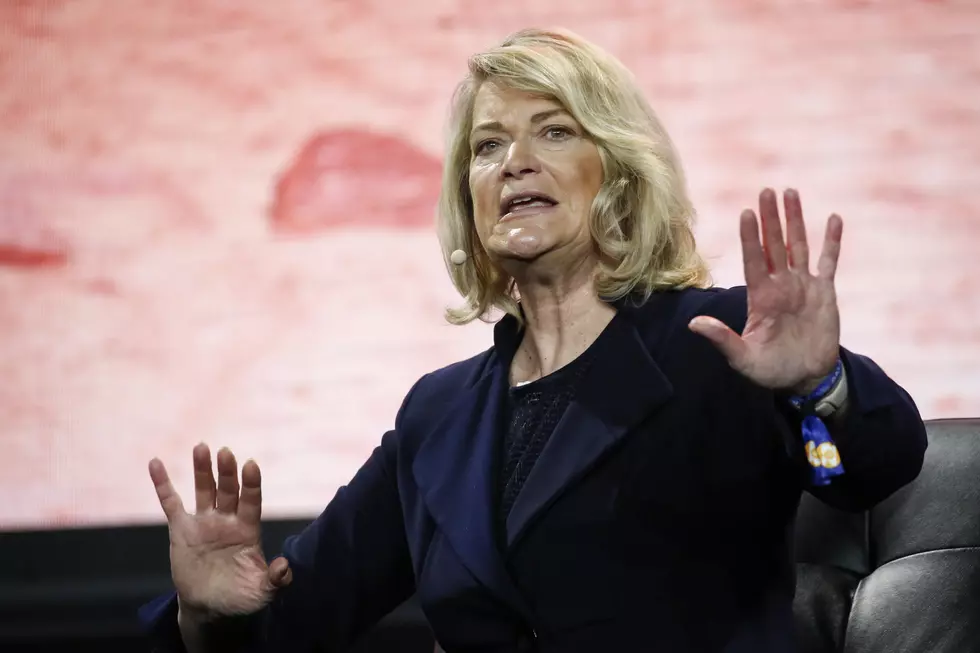
Biden’s Student Loan Plan: What We Know (and What We Don’t)
Under a new plan announced by President Joe Biden, many Americans can have up to $10,000 in federal student loan debt forgiven. That amount increases to $20,000 if they qualified for Pell grants. Here's what we know so far and what it means for people with outstanding student loans:

WHO QUALIFIES FOR STUDENT LOAN FORGIVENESS?
You qualify to have up to $10,000 forgiven if your loan is held by the Department of Education and you make less than $125,000 individually or $250,000 for a family. If you received Pell grants, which are reserved for undergraduates with the most significant financial need, you can have up to $20,000 forgiven. If you are a current borrower and a dependent student, you will be eligible for relief based on your parents' income, rather than your own.
WILL THE STUDENT LOAN PAYMENT FREEZE BE EXTENDED?
The payment freeze will be extended one last time, until Dec. 31. The freeze started in 2020 as a way to help people struggling financially during the COVID-19 pandemic and it's been extended several times since. It was set to expire Aug. 31.
Interest rates will remain at 0% until repayments start. Under an earlier extension announced in April, people who were behind on payments before the pandemic automatically will be put in good standing.
HOW DO I APPLY FOR STUDENT LOAN FORGIVENESS?
Details of that have not been announced, but keep an eye on the federal student aid website for more details in coming days.
DOES GRADUATE STUDENT DEBT QUALIFY?
Yes, federal student loans taken out to cover graduate degrees qualify for forgiveness.
WHAT IF MY STUDENT LOAN BALANCE INCLUDES A LOT OF INTEREST?
The interest itself is considered part of the balance for purposes of this program. Forgiveness will remove $10,000 from the total balance you owe.
WILL I HAVE TO PAY TAXES ON THE AMOUNT I’M FORGIVEN?
No. Congress eliminated taxes on loan forgiveness through 2025. It is possible some states could tax cancelled debt, according to the nonprofit Tax Foundation, but it’s not clear yet if that will happen.
DO PARENT PLUS LOANS QUALIFY?
Parent Plus loans are included in the forgiveness plan, subject to the same $250,000 income cap for families that applies to the rest of cancellation.
Parent Plus loans differ from other federal education loans in that they can go towards covering expenses other than tuition, such as books, and room and board for college students. As of March 2022, parents of 3.6 million students owe more than $107 billion in Parent Plus loans, according to the Department of Education. That represents about 6% of the total amount of federal student debt held by Americans.
If a parent received a Parent Plus loan on behalf of a student and the same student received a direct loan, both would receive relief, as the cancellation is on a per-borrower, not a per-student basis. That means that each person who has Education Department-held federal student loans and meets the income requirements qualifies for cancellation.
WHAT'S A PELL GRANT AND HOW DO I KNOW IF I HAVE ONE?
Roughly 27 million borrowers who qualified for Pell grants will be eligible to receive up to $20,000 in forgiveness under the Biden plan.
Pell grants are special government scholarships for lower-income Americans, who currently can receive up to $6,895 annually for roughly six years.
Nearly every Pell Grant recipient came from a family that made less than $60,000 a year, according to the Department of Education, which said Pell grant recipients typically experience more challenges repaying their debt than other borrowers.
Pell grants themselves don’t generally have to be paid back, but recipients typically take out additional student loans.
“This additional relief for Pell borrowers is also an important piece of racial equity in cancellation,” said Kat Welbeck, Civil Rights Counsel for the Student Borrower Protection Center. “Because student debt exacerbates existing inequities, the racial wealth gap means that students of color, especially those that are Black and Latino, are more likely to come from low-wealth households, have student debt, and borrow in higher quantities.”
To find out if you have a Pell grant, check any emails you've received that describe your FAFSA award.
HOW MANY PEOPLE WILL THIS HELP?
About 43 million Americans have federal student debt, with an average balance of $37,667, according to federal data. A third of those owe less than $10,000. Half owe less than $20,000. The total amount of federal student debt is more than $1.6 trillion.
WHAT IF I’VE ALREADY PAID OFF MY STUDENT LOANS — WILL I SEE RELIEF?
The debt forgiveness is expected to apply only to those currently holding student debt. But if you’ve voluntarily made payments since March 2020, when payments were paused, you can request a refund for those payments, according to the Federal Office of Student Aid. Contact your loan servicer to request a refund.
WILL STUDENT LOAN FORGIVENESS DEFINITELY HAPPEN?
The White House could face lawsuits over the plan, because Congress has never given the president the explicit authority to cancel debt. The Biden administration is tying its authority to the coronavirus pandemic and to a 2003 law aimed at providing help to members of the military. We don't know yet how any legal action might impact the timetable for student loan forgiveness.
WHAT REPAYMENT PLAN IS THE DEPARTMENT OF EDUCATION PROPOSING?
The Department of Education has proposed a repayment plan that would cap monthly payments at no more than 5% of a borrower’s discretionary income, down from 10% now. Borrowers will need to apply for the repayment plan if it’s approved, which could take a year or more.
For example, under the proposal, a single borrower making $38,000 a year would pay $31 a month, according a government press release.
The amount considered non-discretionary income will also be increased, through the department has not said how much.
Discretionary income usually refers to what you have left after covering necessities like food and rent, but for student loan repayment purposes it’s calculated using a formula that takes into account the difference between a borrower’s annual income and the federal poverty line, along with family size and geographic location.
“What’s tough about income-driven repayment is that it does not take into account your other liabilities, such as your rent payment,” said Kristen Ahlenius, a financial counselor at Your Money Line, which provides financial literacy training. “If someone’s living paycheck to paycheck and their rent is taking up half of their paycheck and then their car payment takes the other, they have to choose. Unfortunately, income-driven repayment doesn’t take that into consideration, but it is an option.”
Student Debt Relief offers a calculator to help determine your discretionary income.
WHAT IF I CAN’T AFFORD TO PAY EVEN WITH LOAN FORGIVENESS?
Once payments resume, borrowers who can’t pay risk delinquency and eventually default. That can hurt your credit rating and mean you're not eligible for additional aid.
If you’re struggling to pay, check if you qualify for an income-driven repayment plan. You can find out more here.
The plan Biden announced Wednesday also includes a proposal that would allow people with undergraduate loans to cap repayment at 5% of their monthly income. Proposals like this one can take a year or more to be implemented, and it's not clear what the fine print will be.
If you have worked for a government agency or a non-profit organization, you could also be eligible for the Public Service Loan Forgiveness Program, which you can read more about here.
___
Seung Min Kim, Michael Balsamo, Chris Megerian, Collin Binkley and Zeke Miller in Washington contributed to this report.
Top 25 leftovers Wyomingites Eat Cold
More From K2 Radio









